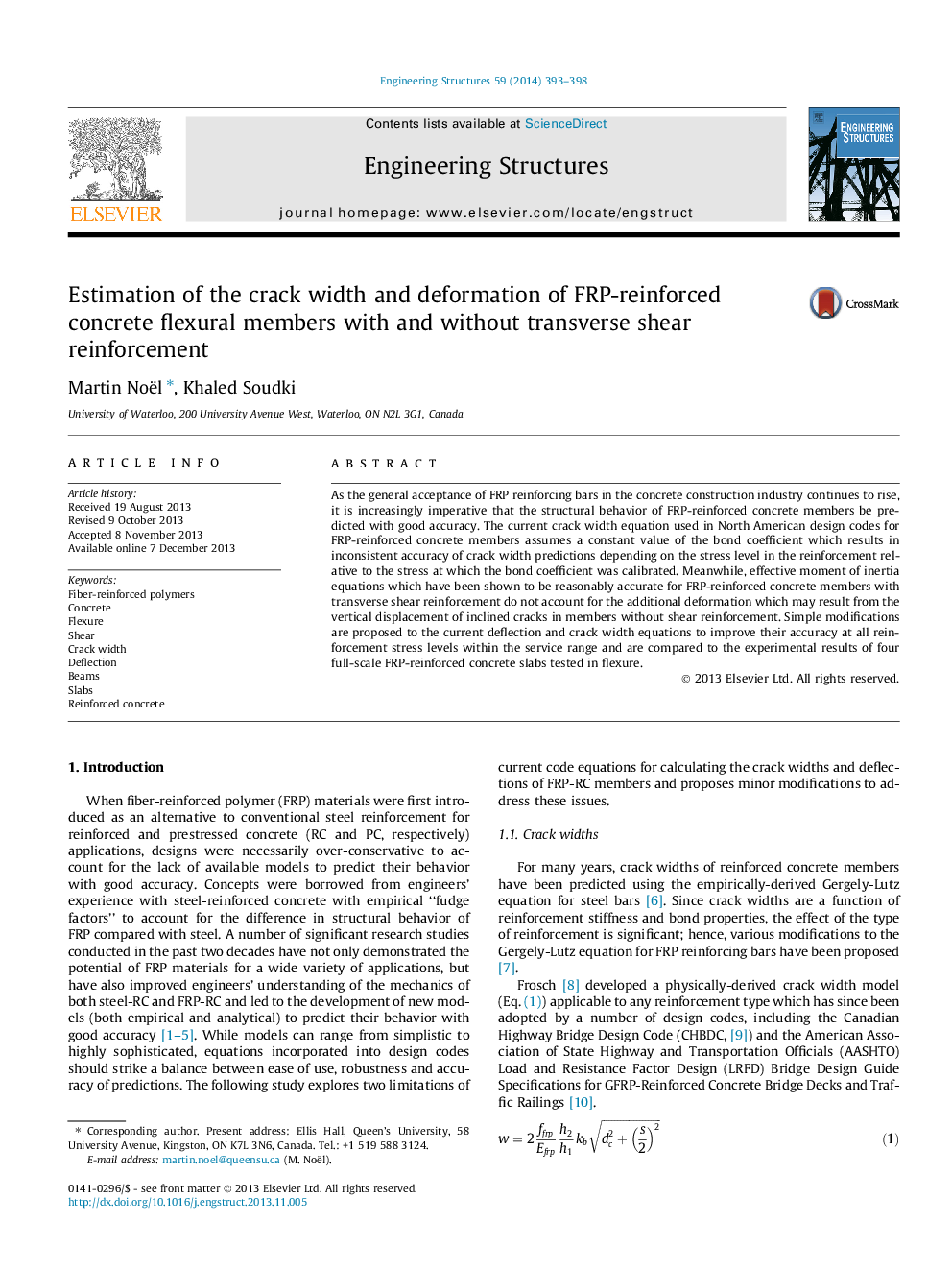| Article ID | Journal | Published Year | Pages | File Type |
|---|---|---|---|---|
| 6740890 | Engineering Structures | 2014 | 6 Pages |
Abstract
As the general acceptance of FRP reinforcing bars in the concrete construction industry continues to rise, it is increasingly imperative that the structural behavior of FRP-reinforced concrete members be predicted with good accuracy. The current crack width equation used in North American design codes for FRP-reinforced concrete members assumes a constant value of the bond coefficient which results in inconsistent accuracy of crack width predictions depending on the stress level in the reinforcement relative to the stress at which the bond coefficient was calibrated. Meanwhile, effective moment of inertia equations which have been shown to be reasonably accurate for FRP-reinforced concrete members with transverse shear reinforcement do not account for the additional deformation which may result from the vertical displacement of inclined cracks in members without shear reinforcement. Simple modifications are proposed to the current deflection and crack width equations to improve their accuracy at all reinforcement stress levels within the service range and are compared to the experimental results of four full-scale FRP-reinforced concrete slabs tested in flexure.
Keywords
Related Topics
Physical Sciences and Engineering
Earth and Planetary Sciences
Geotechnical Engineering and Engineering Geology
Authors
Martin Noël, Khaled Soudki,
